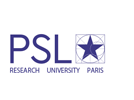Abstract
In the 1950s and 1960s, the relationship between Italy and the Socialist Federal Republic of Yugoslavia improved despite the Cold War. For the Italian artists involved in the New Tendencies, this new situation provided opportunities for recognition as an alternative to Art Informel, the dominant style in the international art market. Getulio Alviani, Enzo Mari and Eugenio Carmi, are three of the key Italian artists in this period who exhibited in Yugoslavian museums and galleries. Using new archival material, this paper sheds light on a unique postwar revival of Constructivism within a peripheral artist network far from New York and Paris.
Recommended Citation
Rubino, Giovanni. "Italian Art in Yugoslavia from 1961 to 1967: An Overlooked Chronicle." Artl@s Bulletin 3, no. 1 (2014): Article 6.






